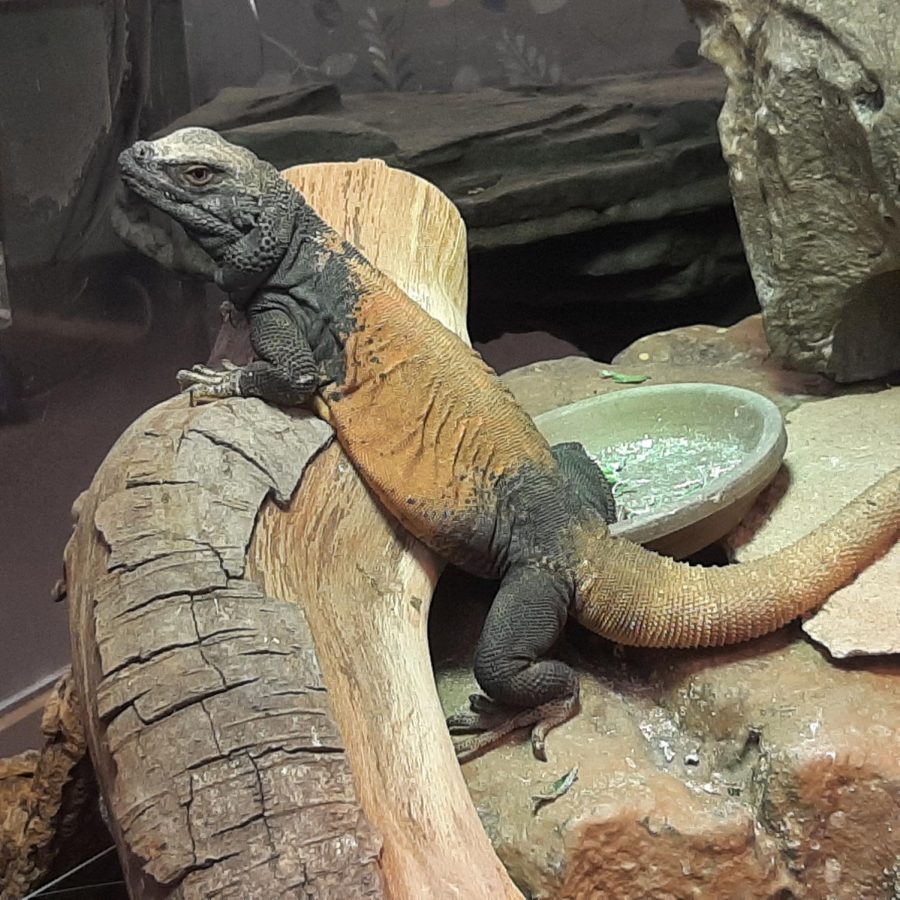Valley hikers, bikers can see strange creatures while exploring the desert
a three-year old chuckwalla lizard at CNUW at SCC
January 7, 2023
Arizona hosts some of the most unusual creatures in the U.S. and many can be seen by hikers and bikers using the numerous desert trails surrounding Phoenix.
A number of interesting creatures can be observed from the Brown’s Ranch trail, and others, at Scottsdale’s McDowell Sonoran Preserve. The 30,500-acre preserve is considered the largest urban park in the country.
Preserve Director, Kroy Ekblaw talked to Northeast Valley News about some of the wildlife that resides within the preserve.
“There have been numerous sightings at Brown’s Ranch of the common-side blotched lizard, regal horned lizard, Gila monster, and the Sonoran Desert tortoise,” Ekblaw said.
According to Ekblaw, Gila monster sightings are actually quite rare since Arizona’s largest lizard spends most of its time underground.
Even though Gila monsters are one of only two kinds of venomous lizards in North America and should be considered dangerous, they move quite slowly (1.5 mph max.) and rarely bite humans.
The desert tortoise is another unique resident found near the Brown’s Ranch trail. They spend most of their time in shelters, venturing out to eat and breed. You are most likely to see them during the monsoon season and they can live 50 to 80 years.
The regal horned lizard is a common prey animal of coyotes. What this flat, stubby-legged lizard lacks in speed and elusiveness, it makes up for with a bizarre defense mechanism.
When attacked, it has the ability to squirt blood from its eyes.
The lizard aims for the eyes and mouth of whatever is trying to eat it. The blood spray can cause burning of the eyes and leave a foul taste in the mouth of potential predators.
Darrell Woolf curates the live animal exhibit at Scottsdale Community College and weighed in on his choice for curious Arizona critter during an interview at the school’s Center for Urban and Native Wildlife.
Woolf told Northeast Valley News that Arizona’s second largest lizard, the chuckwalla, has a unique way of communicating.
“They kinda show themselves off on top of boulders…they’re funny because they’ll bob their heads at each other, trying to set out territory or attract females,” Woolf said. “It’s a very noticeable behavior, so that’s a great thing to see on a hike.”
According to Woolf, chuckwallas also have a unique way of defending themselves by wedging their body deep in a rock crevice and inflating their lungs, making it difficult for predators to pry them from their hiding place.
Woolf recommends the second edition of A Field Guide to Amphibians and Reptiles in Arizona to outdoor enthusiasts seeking to positively identify the fascinating creatures they’ll find while exploring the desert terrain. The book was co-written by Mesa Community College professor Dr. Andrew Holycross.


